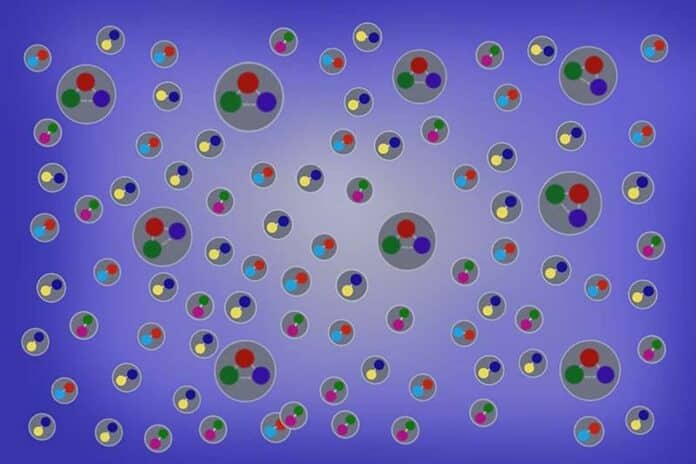Scientists created an exciting state of matter called Quark gluon plasma (QGP) by crashing heavy nuclei together in a laboratory. This collision creates a QGP fireball that expands and cools, following the laws of hydrodynamics.
Around the collision, the emergence of subatomic particles like protons and pions was observed by detectors. Changes in the number of these particles from crash to collision reveal vital details about the QGP. Extracting this info is tricky, but the maximum entropy principle helps connect experimental observations to QGP behavior.
As the QGP fireball expands and cools, it becomes too diluted for hydrodynamics to describe. At this point, the QGP undergoes “hadronization,” where its energy is carried by hadrons—particles like protons and neutrons made up of quarks. Hadrons’ “freeze-out” preserves information about the QGP’s final state, allowing detectors to capture this data in an experiment.
New research uses simulations to compute observable fluctuations in the QGP, helping identify hints of a critical point between the QGP fireball and a gaseous hadronized state. This critical point is an unresolved question in quantum chromodynamics, the theory of strong interactions between quarks.
Fluctuations in the QGP provide information about the part of the QCD phase diagram where collisions “freeze out.” Connecting fluctuations in hydrodynamics to observed hadron fluctuations is crucial for translating experimental data into the QCD phase diagram. Large fluctuations in events are key practical signs of the critical point.
Data from the Run-I Beam Energy Scan (BES) program at RHIC suggest the critical point’s presence. Researchers at the University of Illinois, Chicago, proposed a novel approach to convert hydrodynamic fluctuations into hadron multiplicity fluctuations. This new method elegantly overcomes challenges faced by previous attempts, preserving all information about hydrodynamics’ conserved quantity fluctuations.
The freeze-out procedure will be helpful in theoretical calculations of event-by-event fluctuations and correlations observed in experiments like the Beam Energy Scan program at RHIC for mapping the QCD phase diagram.
Journal Reference:
- Pradeep, M.S. and Stephanov, M., Maximum Entropy Freeze-out of Hydrodynamic Fluctuations. Physical Review Letters 130, 16 (2023). DOI: 10.1103/PhysRevLett.130.162301
